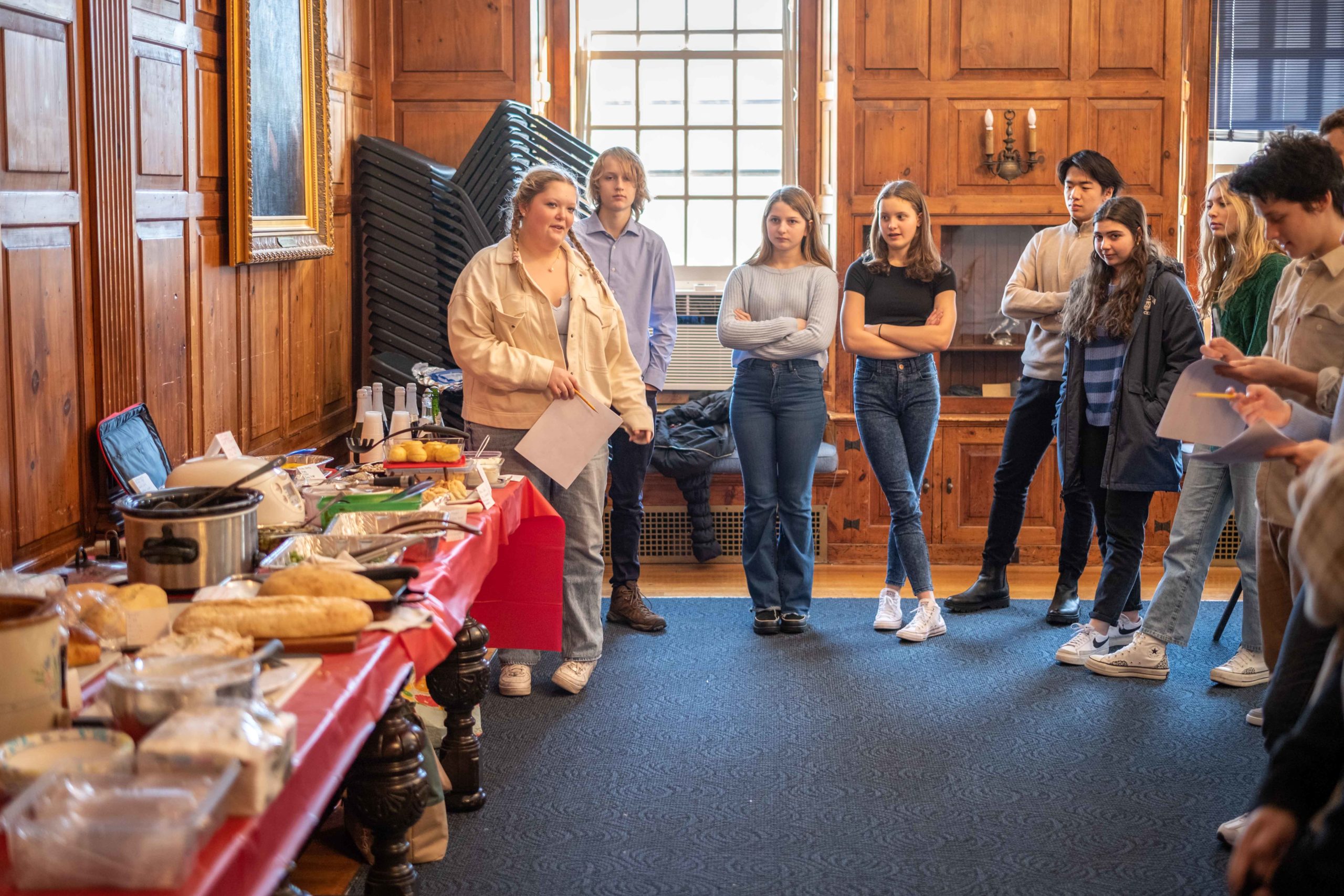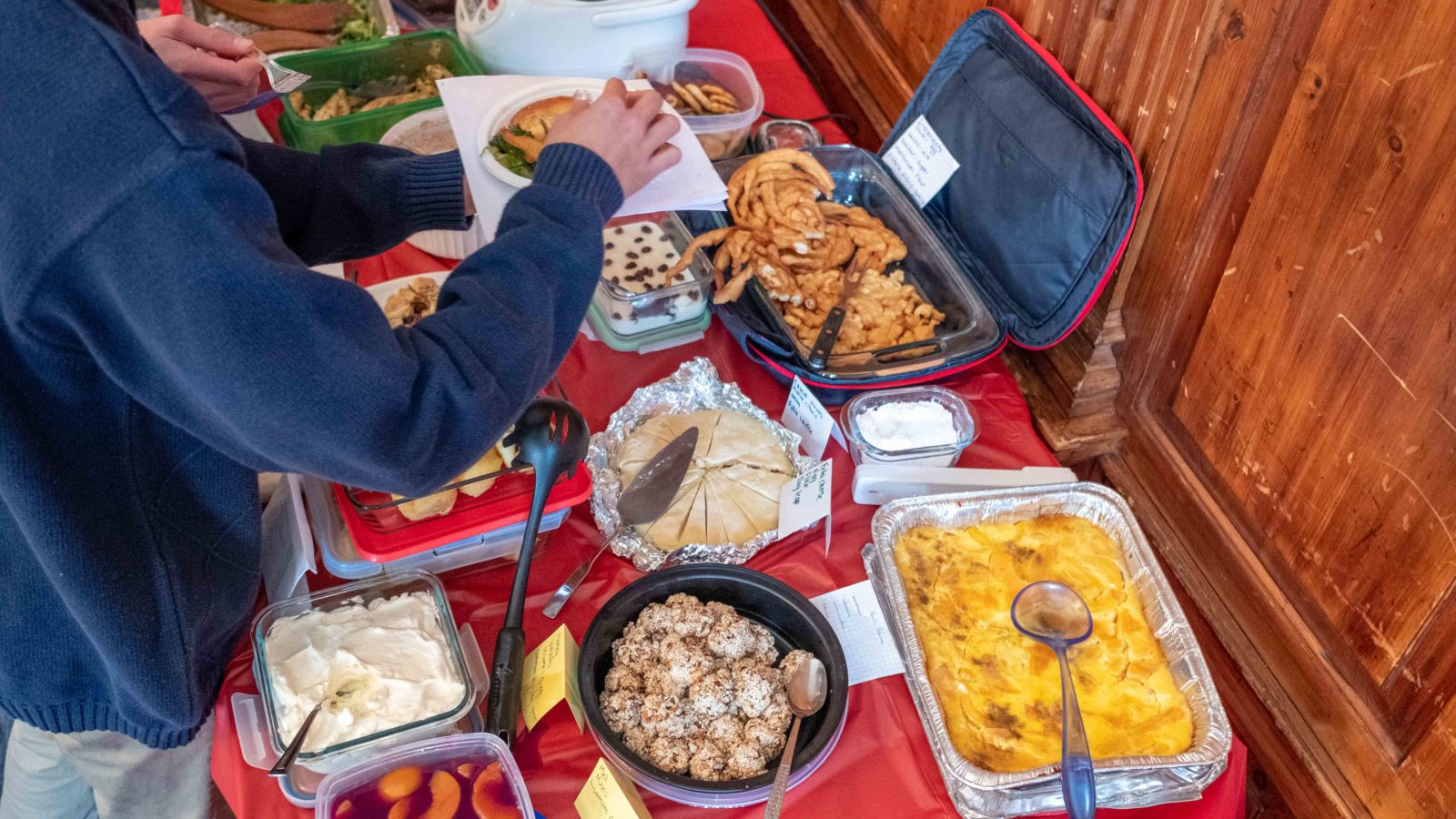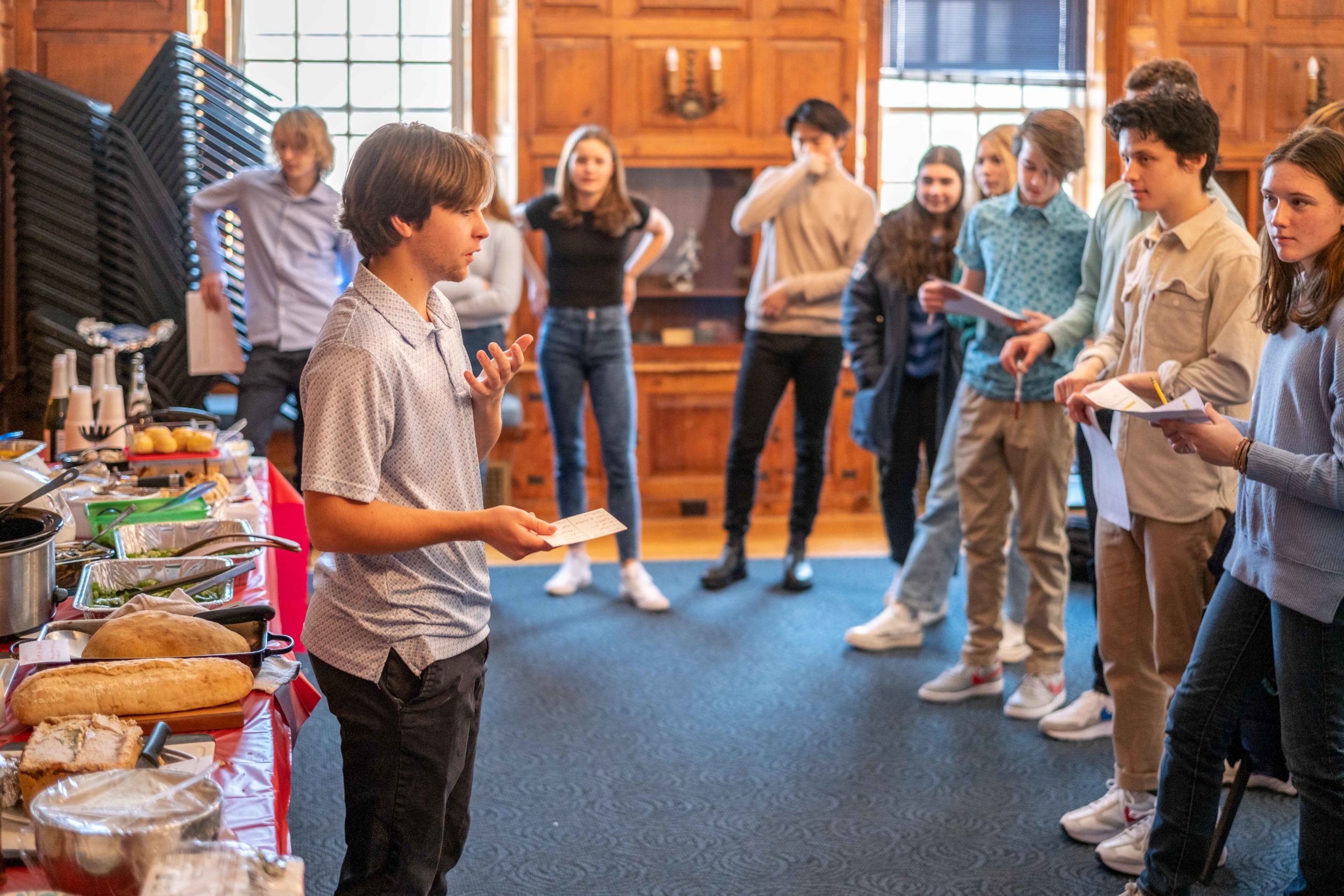
Nourishing the mind of a student is at the forefront of everyday life at Williston, but on Monday Latin teachers Beatrice Cody and Kathryn Hill decided it was time to feed another key component of their students’ bodies—the stomach.
Latin II and Latin II Honors students convened in the Dodge Room at the Reed Campus Center for a Saturnalia celebration dinner instead of a traditional class—Saturnalia being the ancient Roman festival/holiday in honor of the god Saturn—and the feast was entirely prepared by students. The prepared dishes ranged from pastry-covered ham to Alexandrian sweets, and students put index cards in front of their dishes explaining the ingredients—in both English and Latin.
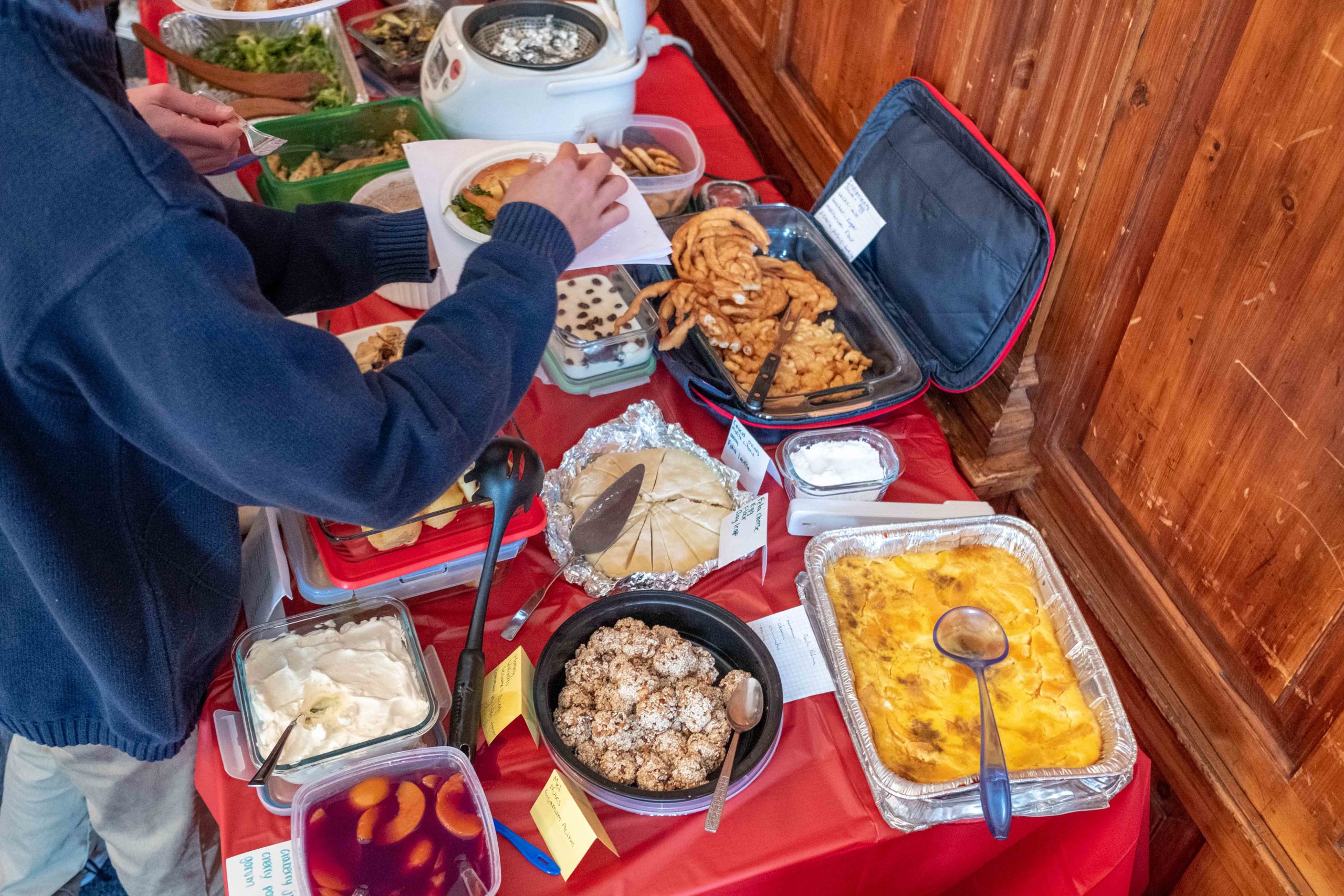
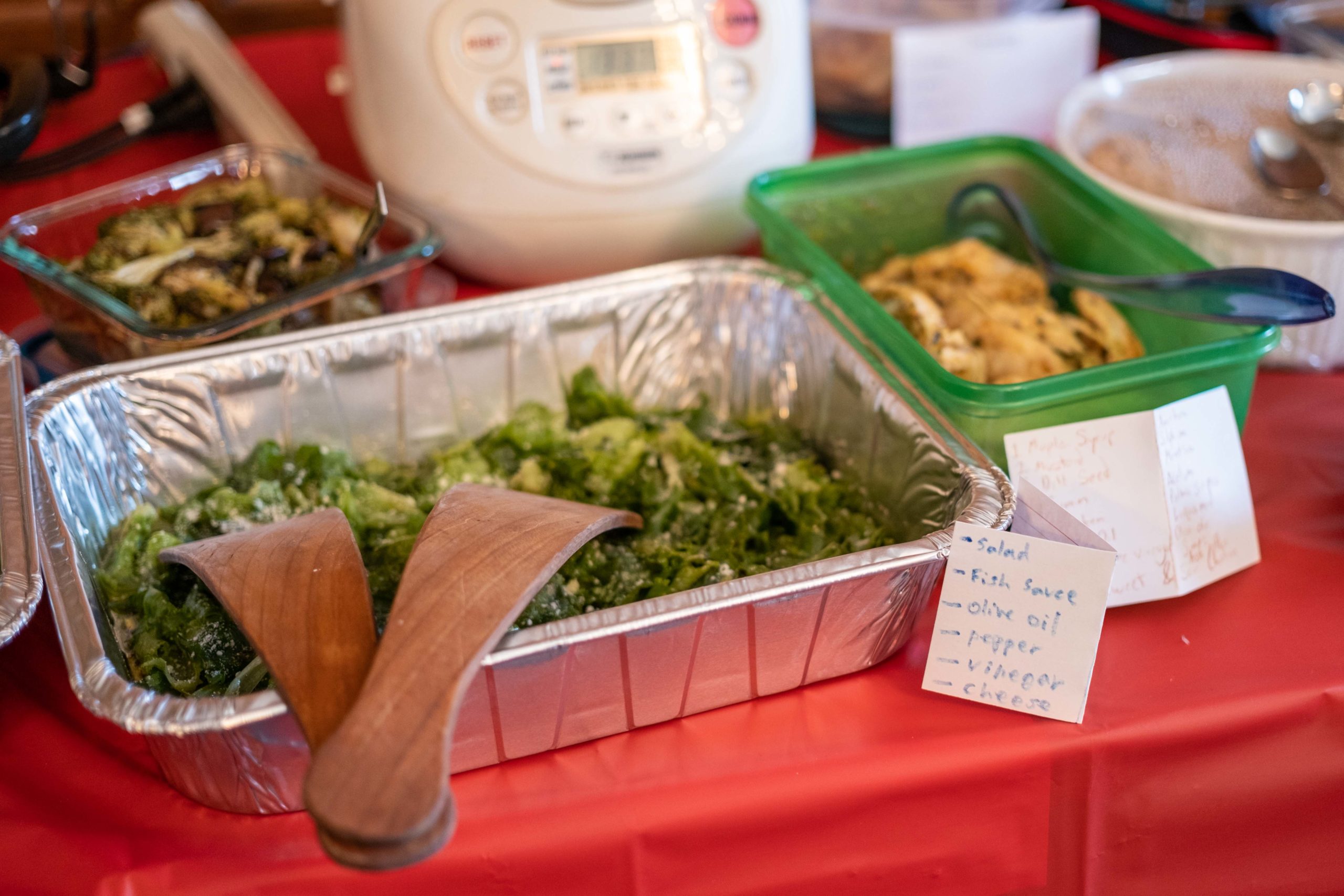
Latin II Honors teacher Beatrice Cody noted how the dinner–called a cena–helps tie together several themes from her classes. “Part of it is to celebrate the season,” Cody said. “And then, one of the things that we try to do in this course in addition to learning Latin endings and reading Latin text, is experience a little bit of Roman culture if we can.”
To find their dishes, students scoured textbooks and other Roman source materials for inspiration. Sunday was spent preparing the products—Hill hosted three students in her kitchen to help facilitate the cooking—and on Monday, the feast was served.
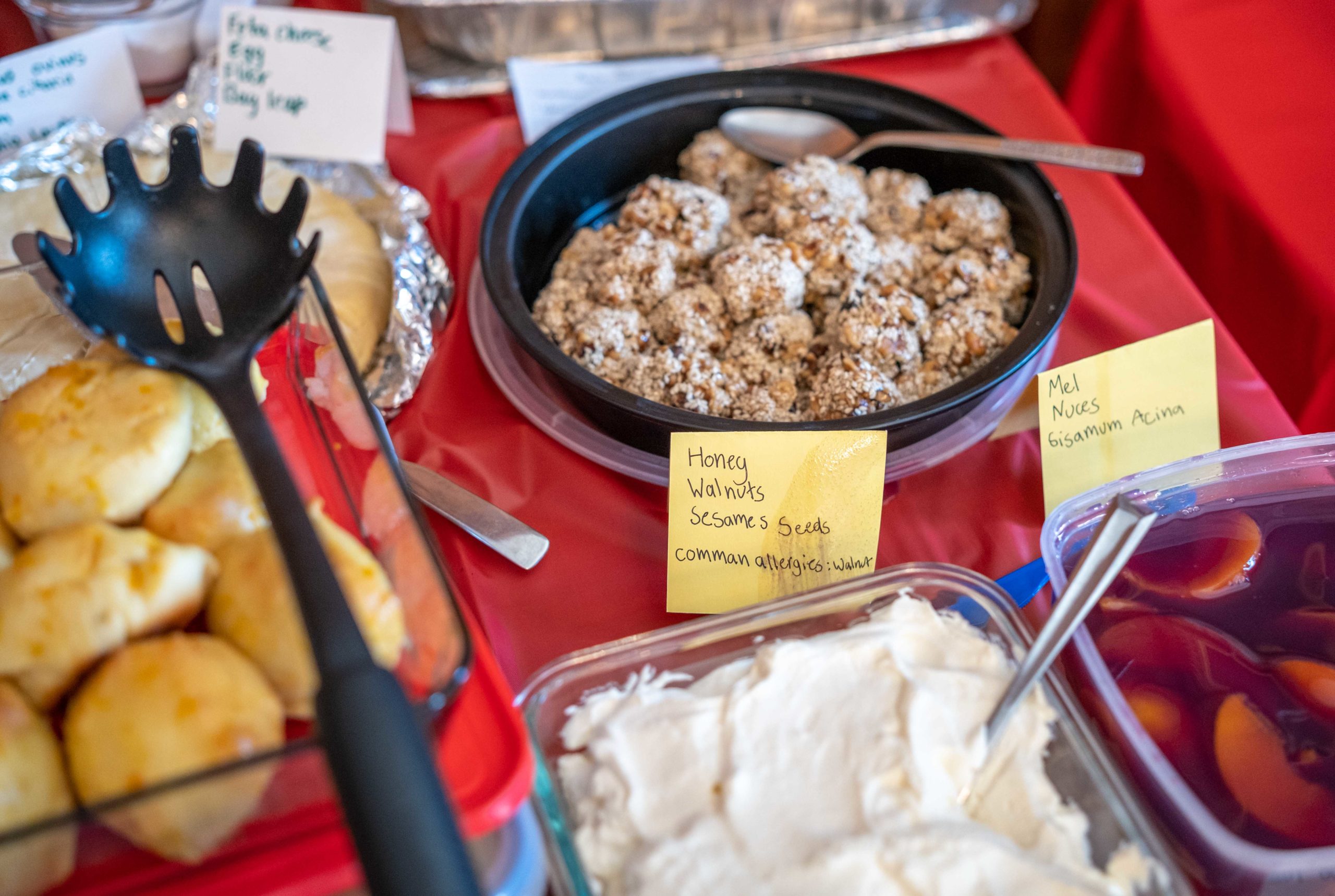
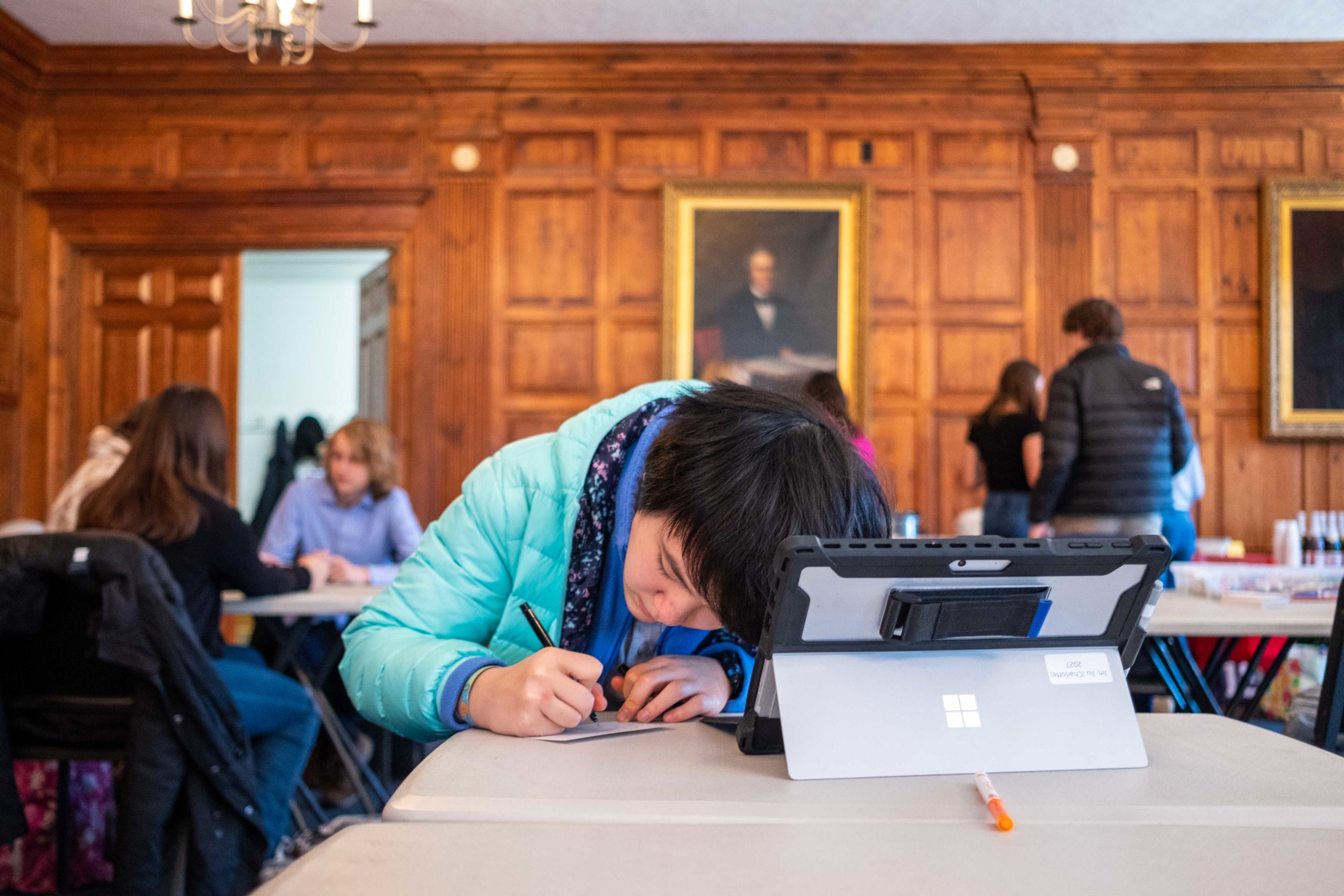
Maya Mallett ‘26, who prepared Alexandrian sweets consisting of sesame seeds and walnuts shaped into balls covered in honey, said that studying readily available ingredients for Romans was enlightening. “I thought it was interesting, the spelling of the words and how they correlate with the English spelling … and the materials they had to use and what they made out of it.”
One common ingredient Monday was honey—or mel—used as a sweetener since Romans did not have a steady supply of sugar to cook with. There was also plenty of sal (salt) used in the dishes, along with ovum (egg), carmum (cream) and other traditional Roman baking ingredients. New this year, according to Cody, was a fish gut sauce that was a Roman staple. Two students were brave enough to use the ingredient in their dishes.
Eighth grader Meredith Cross, meanwhile, made a ham that was wrapped in pastry. “It was fun. I really liked making it,” Cross said.“It took a long time, I had to boil it for like two hours.”
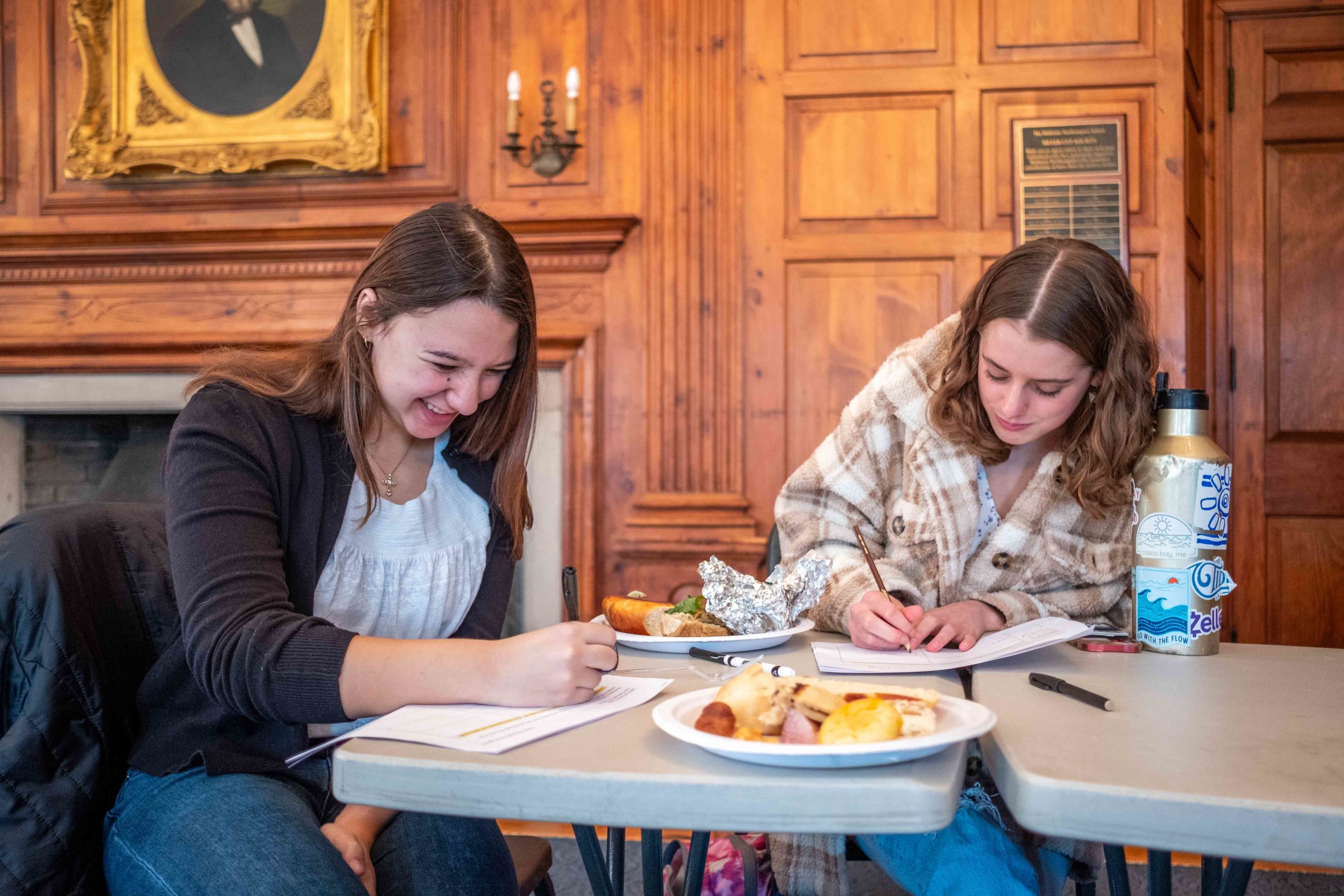
Classmate and grademate Charlotte Jin brought a pudding that seemed simple enough to make. The reality, though, was a tad different. “No, not really,” Jin said on if the dish was easy to make. “I had to do it over two times. The first time I did it, it was just a liquid, and the second time I did it, it was completely solid. So I had to find out really what to do, because the recipe wasn’t as specific.”
Oscar Cui ‘25 made a seafood stew for his dish. For him, seeing the difference between modern seafood and what the ancient Romans ate was fascinating. “I saw a picture of what I expected it to be, and I saw the ingredients, but it was just limited seasonings with the seafood, so I was attracted to it and wanted to try it myself,” Cui said, “to see what the difference was.”
The arrival of Saturnalia just before the winter break meant the dinner also served as a good point to stop and take stock of a fall spent learning. But even with interspersed laughter and chatter among the kids, Cody noted that the day’s lesson was an important way to learn about Roman culture. “We try whenever we can, we try to have some kind of authentic cultural experience,” Cody said, “and this is one of the best ways to have an all-senses-engaged cultural experience.”
